Related Content
Content

Episode 4: Stockholm to Malmo
Heading south on a 'high-speed train' which erm isn't actually a high-speed train, but is still rather fabulous!
Share
Heading south from Stockholm by Snabbtag train:
I looped back to the hostel to collect my luggage and by 11:00 I was back at Stockholm Central, giving myself time to explore.
The dominant feature of the station is its stunning main hall, which until 1927 was home to the trains, hence its arched glass roof.
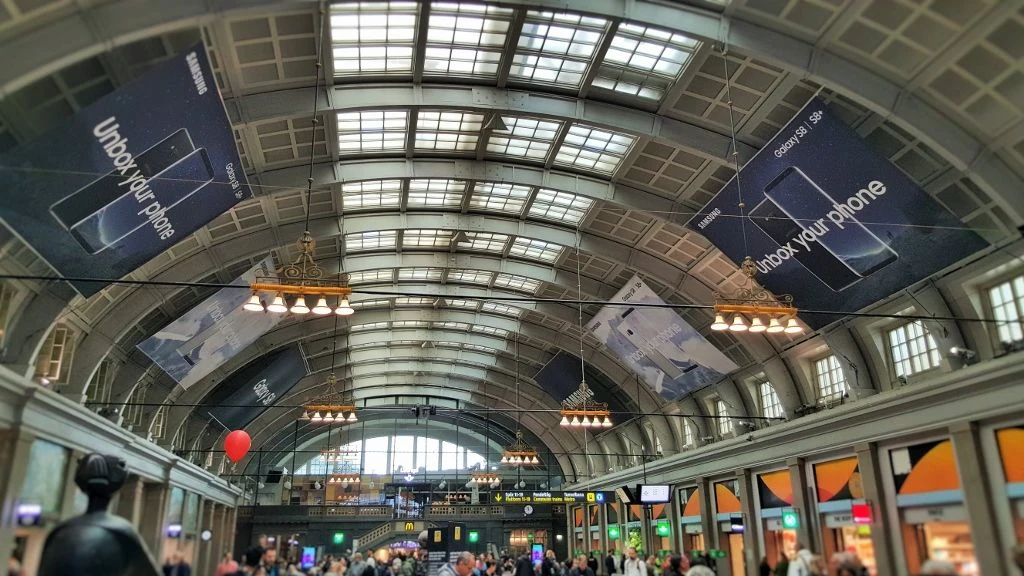
The adjacent main entrance on the street named Vasagatan is also one of the most beautiful spaces to be found at any large European railway terminus; and it’s these features which earned it a place on my lovely list of Europe’s most awe-inspiring stations.
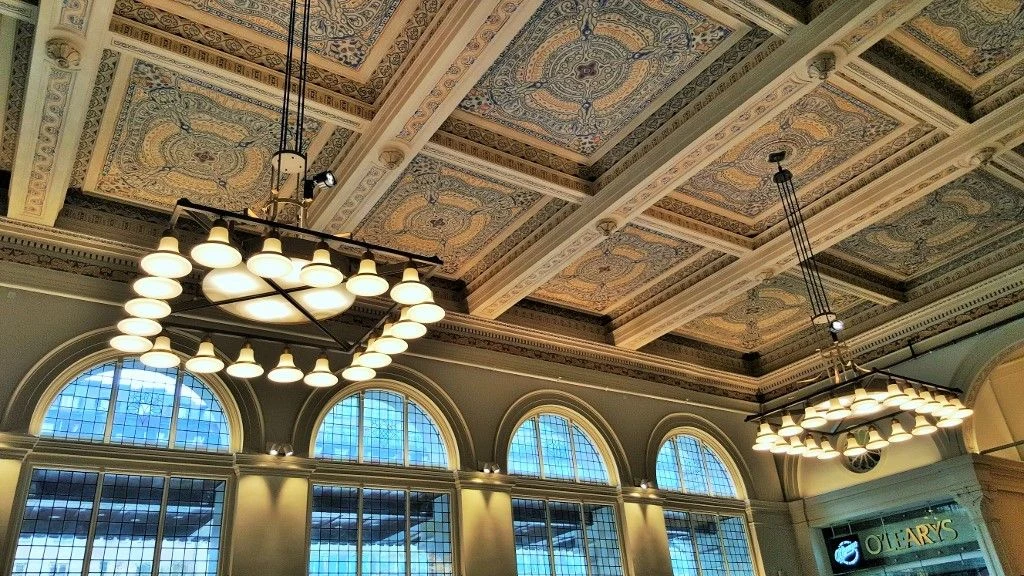
Though many users of Stockholm Central will question this inclusion, for Stockholm Central is typical of many large European stations in that it has been configured to provide multiple access points to the trains which leave from this main station.
Presumably when the express trains heading south were moved out of the original building, the part of the station they leave from was more inviting, than it is these days.
To the express trains heading south
If your taxi or bus drops you on, Klarabergsviadukten, the main road bridge which spans the station, you can descend directly down to the spar/platforms/tracks that the Snabtaag trains to the south depart from.
Or if you want to access these trains direct from the T-Centralnen metro station, you can use a direct route through an underground passage way, though both of these short-cuts miss out on the most visually appealing areas of the station.
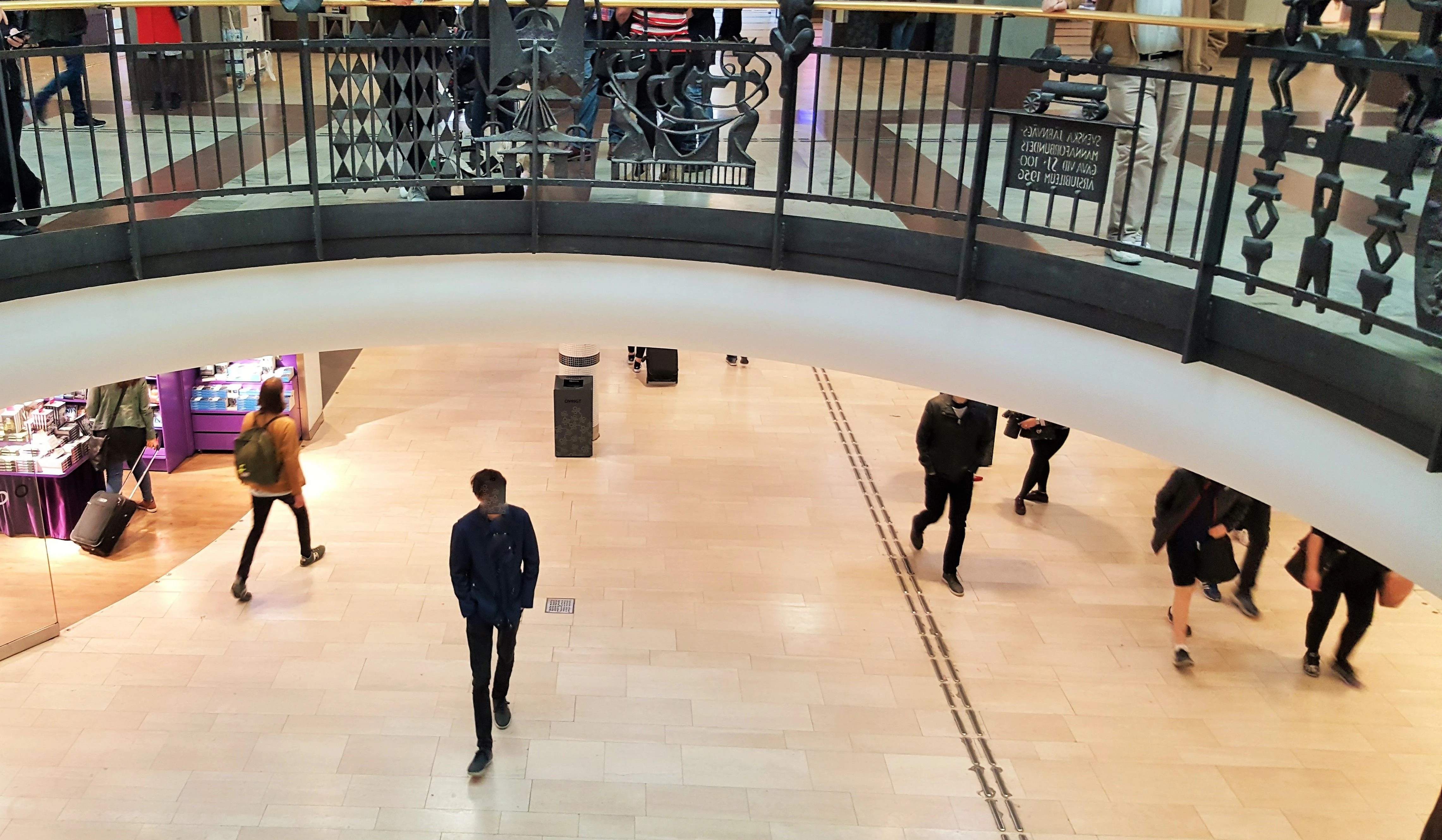
Though something to be aware of is that no matter which of the access points you use, the spars (platfiorms) 11 and 12, which the trains to Malmo, Copenhagen and Oslo usually depart from, have no escalators access; though there are lifts available if you have luggage etc.
Though unless you’re cutting it fine and arriving at the station less than 5 minutes before your Snabtaag train is due to leave, heading direct to the trains isn’t the best option.
The Snabbtag and IC trains heading south and west to Goteborg, Malmo, Copenhagen and Oslo commence their journeys in Stockholm, so when the number of the spar (track/platform) was confirmed around 20 minutes prior to departure , I expected to find my train already waiting at the spar (track/platform) for instant boarding.
But that is not how things work at Stockholm Central.
Instead the trains pull into the platform around 5 – 7 minutes before they are due to depart, because they are made ready for their next trips at a servicing facility just outside the station.
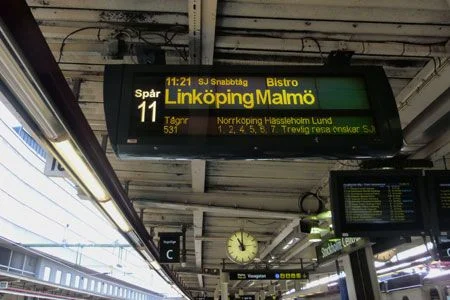
The platform numbers appear on the departure screens around the station around 20 mins before departure; keep an eye on them because no announcements are made when trains are operating normally.
Also if you’ll be boarding a train to Copenhagen look out for Kopenhamm, the Swedish name for the city, on the departure screens.
Hence the platform will be crowded when the train pulls in and despite every passenger having a reservation, so no need to worry about finding an available seat(s), this mass of humanity rushes to join the train.
What contributes to this somewhat chaotic atmosphere, is that despite the need to ideally board coaches in which the reserved seats will be located, there is nothing on the platform to indicate where each coach will be when the train pulls in.
British readers will be thinking, ‘that reminds me of what can happen when I board long distance trains in England, Scotland, or Wales, everyone has to play a game of ‘head-less chickens’.
So the trick for avoiding this scenario is to hold your nerve and not make your way to your train until around 5 mins before it is due to leave.
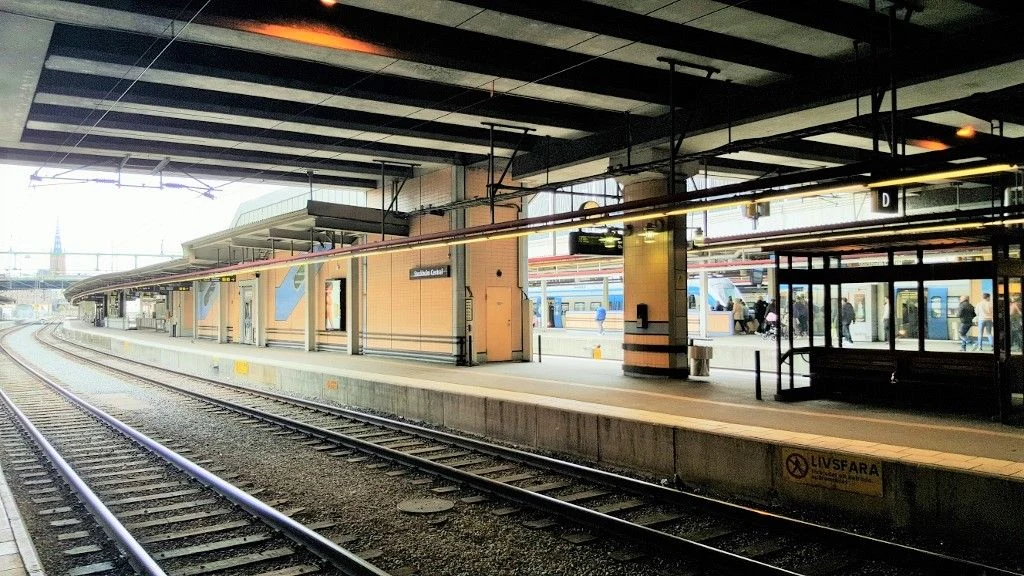
In cold weather, a fairly common scenario in Stockholm, you can then avoid freezing in the open air for 15 mins while you wait for the train to arrive.
You’ll then be able to calmly make your way to your assigned seat at the last minute, because nobody else should be sitting in it.
At last I'm on an express train:
Once on board it was time to settle down and enjoy what is a charming journey south to Malmo, don’t expect mountain vistas, the Swedish ski resorts are north of Stockholm, but what you will pass by is a series of lakes which resemble liquid glass.
Though the scenic highlight comes around 20 mins into the journey when the train sweeps across Sweden’s highest railway bridge.
When we get around to compiling our list of ’40 Wow Moments on European train journeys’ this will be an obvious inclusion.
Travel 1st class on a Snabbtag train and you can access a facility I have only ever encountered on Swedish and Danish express trains; namely a help yourself to complimentary coffee and tea bar, using the jugs of boiling water which are placed there by train staff.
This made me think twice, firstly because I seem incapable of managing to consume any complimentary beverage on a train or airline, without spilling most of it all over myself; avoid me at all costs if you ever encounter me trying to open one of those miniature milk cartons.
Secondly because the Snabbtag trains tilt when they go around bends in the track, which seemed to increase the spillage risk for this particularly clumsy oaf.
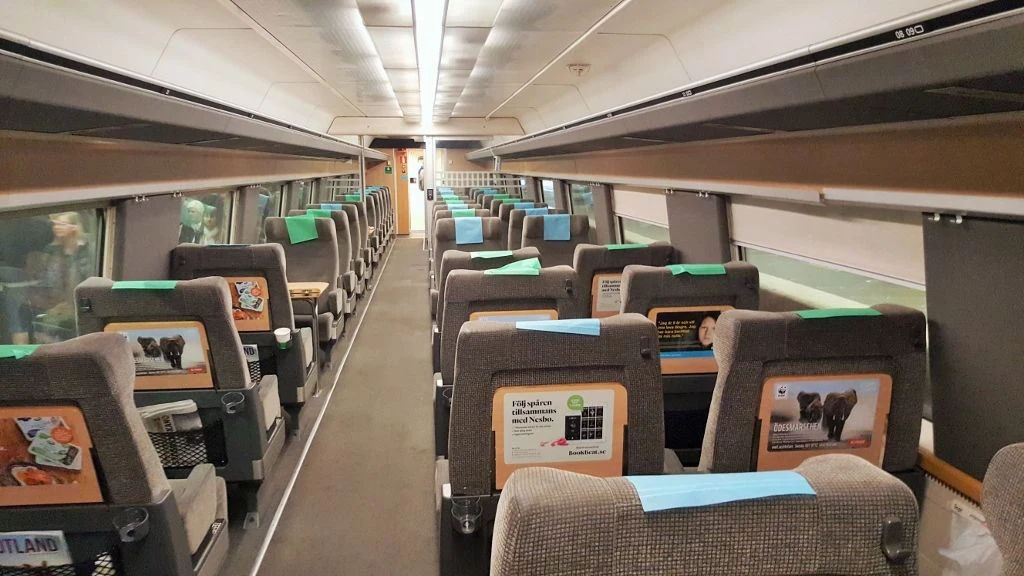
The volume of train travel in Sweden doesn’t justify high speed lines, so tilting was the best solution to make the trains Snabbtag trains faster.
Tilting trains are becoming rarer across Europe, the tilting mechanisms can be mechanically vulnerable, so they’re often permanently switched out of use, but they’re still present on Snabbtag trains.
The tilting motion is less extreme than some I have encountered, but if you’re susceptible to motion sickness, taking some preventative medication is recommended, particularly for such a comparatively lengthy journey.
Compare and contrast
Two aspects of taking this Snabtagg train reminded me of long distance train travel back home in Great Britain.
Like the 125s, which are are still providing an iconic travel experience in Scotland, the X 2000 trains are among the older generation of European long distance trains; they have been in service for nearly 30 years.
Which is fine by me, as like their other more retro-cousins on the European train network, the X 2000 trains used for the Snabtagg services are comparatively comfortable.
Though the X2000 trains are now being refurbished.
The other aspect of this journey, which made me think of home, came at the end of the trip.
The train departed Lund, the final stop before Malmo, more than 20 minutes late, but then having spent only 10 mins travelling on to Malmo, it arrived there with only 5 mins delay.

It hadn’t fallen through a hole in space-time, the more prosaic explanation is that SJ, the Swedish national rail operator, evidently incorporates recovery time into its timetables.
Some long distance British train operators also used to use this tactic, as it allows for contingency on timetables, a train running 10 mins late during the course of its journey, is able to reach its final destination ‘on time’.
I actually wish this was more universal, as it’s beneficial when making connections between trains.
In France, Germany, Italy and elsewhere, the train schedules seem much more tightly timed, every minute a train spends with its brakes on during a journey is how many minutes late it will be.
Which isn’t ideal if you can’t avoid tightly timed connections between trains when making a journey.

Simon Harper
I wanted to share my passion for train travel and explain how anyone can take the fantastic journeys I have taken.

This is one of more than 100 train travel guides available on ShowMeTheJourney, which will make it easier to take the train journeys you want or need to make. As always, all images were captured on trips taken by ShowMeTheJourney.
This second version of ShowMeTheJourney is exciting and new, so we are genuinely thrilled that you are here and reading this, but we also need your help.
We’re striving not to let anything get in the way of providing the most useful service possible, hence a facility has been set up with DonorBox which can be used to support the running costs and make improvements.
Instead of advertising or paywalls, your financial support will make a positive difference to delivering an enhanced service, as there’s a lot of ideas which we want to make happen.
So if you have found the info provided here to be useful, please consider saying thank you.



